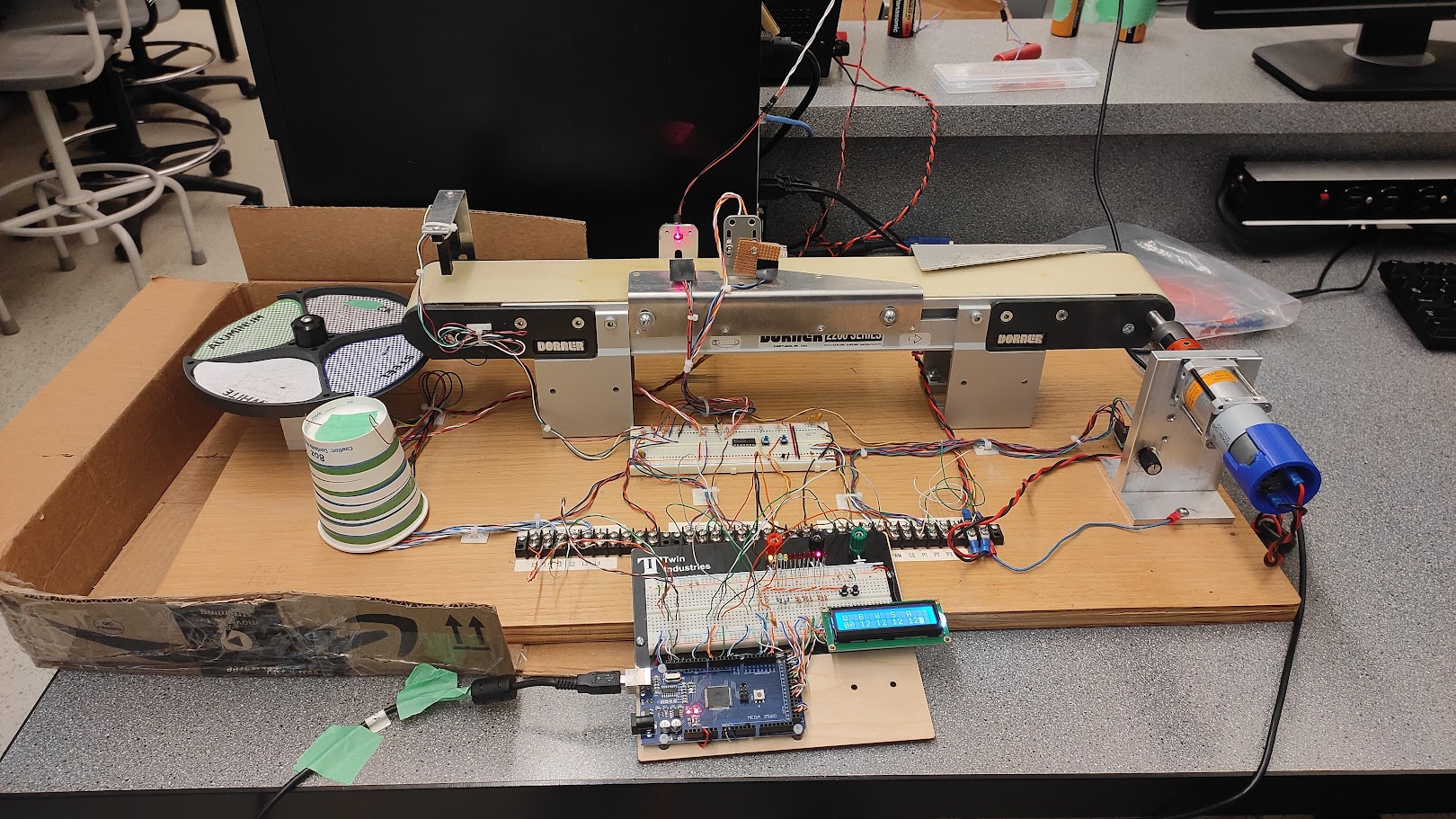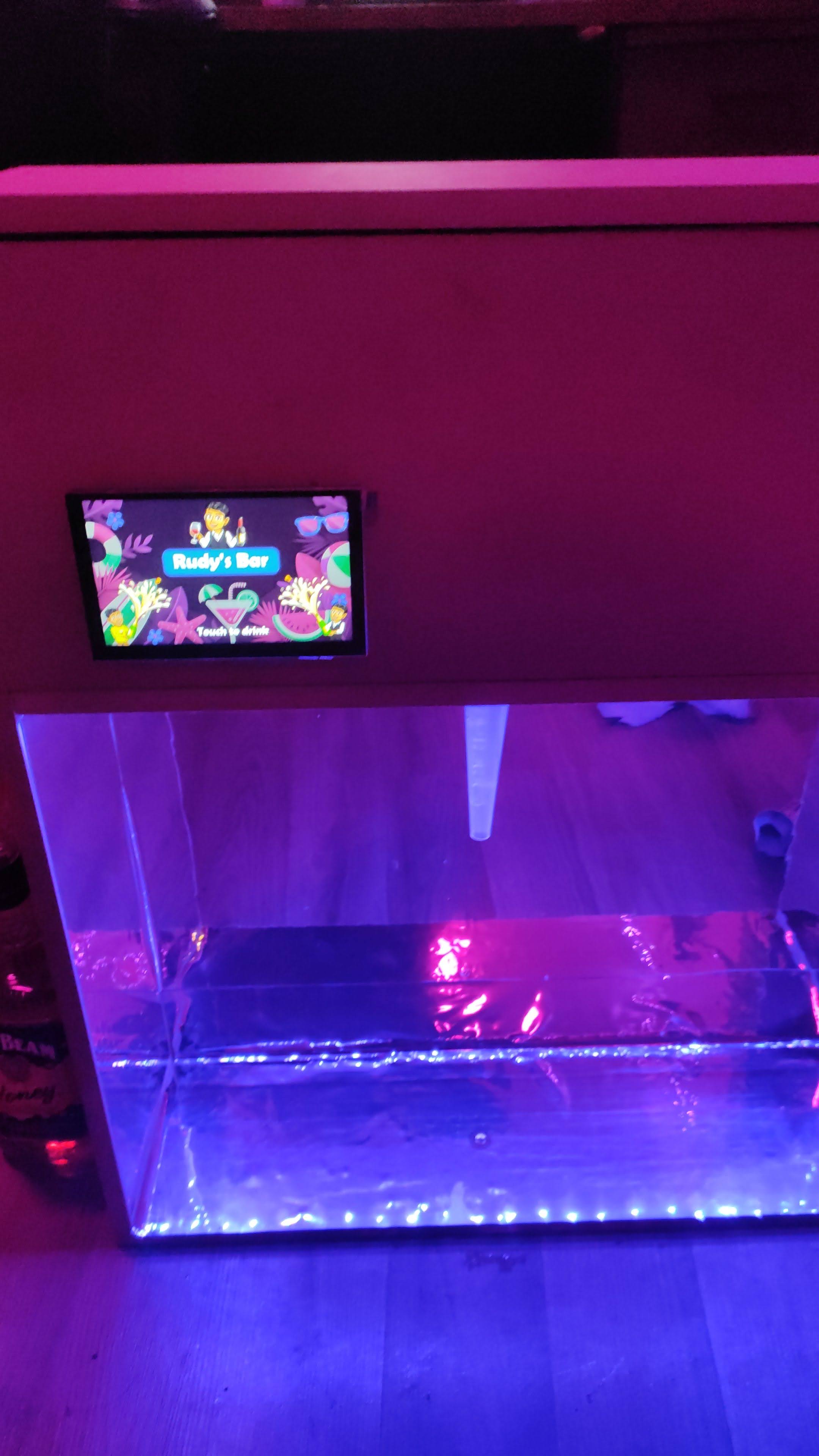Diffie-Hellman Key Exchange Hardware-Software Co-Design
Diffie-Hellman Key Exchange Hardware-Software Co-Design
Diffie-Hellman Key Exchange Hardware-Software Co-Design



Overview
For the ECE 466 project, I enhanced the Diffie-Hellman key exchange protocol by implementing a hardware-software co-design approach. This project aimed to offload the computationally intensive parts of the algorithm to a custom hardware module designed and simulated using SystemC, thereby improving the performance of secure communications.
Technical Approach
System Components:
Hardware Simulation: Custom hardware module simulated using SystemC and GTKWave.
Software: Modified Diffie-Hellman key exchange protocol.
Handshaking Protocol: SW-HW synchronization using enable and done signals.
Development Tools: SystemC for hardware design and simulation, C++ for software implementation.
Development Process:
Introduction and Planning: The project started with an analysis of the Diffie-Hellman key exchange protocol, identifying the 'NN_DigitDiv()' function as a bottleneck. The goal was to translate this function into hardware to enhance performance.
Handshaking Protocol: Developed a simple handshaking protocol to ensure synchronized operations between software and hardware components using enable and done signals.
Hardware Datapath and Controller: Designed a hardware datapath and controller using SystemC to perform the computation-heavy tasks. This included state machines for synchronization and data processing.
Software Implementation: Modified the software implementation of the Diffie-Hellman protocol to interface with the custom hardware module. The software asserted the hw_enable signal to start computations in the hardware and waited for the hw_done signal to read the results.
Challenges and Solutions
Synchronization:
Challenge: Ensuring seamless synchronization between hardware and software components.
Solution: Implemented a handshaking protocol using enable and done signals, ensuring both components operated in sync.
Performance Bottlenecks:
Challenge: Offloading the computationally intensive 'NN_DigitDiv()' function to hardware.
Solution: Translated the 'NN_DigitDiv()' function into a hardware module, significantly reducing computation time.
Hardware Design:
Challenge: Designing a hardware module capable of handling the required computations.
Solution: Created a detailed datapath and controller using SystemC, optimizing for performance and resource utilization.
Project Outcomes
Current Functionality:
Successfully integrated hardware and software components, demonstrating improved performance of the Diffie-Hellman key exchange protocol.
The handshaking protocol ensured reliable communication and synchronization between the hardware and software components.
Performance Metrics:
Achieved a significant reduction in computation time for the 'NN_DigitDiv()' function, improving the overall efficiency of the Diffie-Hellman key exchange protocol.
Limitations:
The current implementation is limited to specific computation tasks. Expanding the hardware module to handle more functions could further enhance performance.
Future Improvements
Expanded Hardware Functions: Incorporating additional computation tasks into the hardware module to further reduce software overhead.
Optimized Hardware Design: Refining the hardware design for better performance and lower resource consumption.
Comprehensive Testing: Conducting more extensive testing in diverse scenarios to validate functional correctness and performance improvements.
Conclusion
The Diffie-Hellman Key Exchange Hardware-Software Co-Design project successfully demonstrated the potential for improving cryptographic protocols through hardware acceleration. By offloading computation-intensive tasks to a custom hardware module, the project achieved significant performance gains, contributing to the advancement of secure communication technologies.
Overview
For the ECE 466 project, I enhanced the Diffie-Hellman key exchange protocol by implementing a hardware-software co-design approach. This project aimed to offload the computationally intensive parts of the algorithm to a custom hardware module designed and simulated using SystemC, thereby improving the performance of secure communications.
Technical Approach
System Components:
Hardware Simulation: Custom hardware module simulated using SystemC and GTKWave.
Software: Modified Diffie-Hellman key exchange protocol.
Handshaking Protocol: SW-HW synchronization using enable and done signals.
Development Tools: SystemC for hardware design and simulation, C++ for software implementation.
Development Process:
Introduction and Planning: The project started with an analysis of the Diffie-Hellman key exchange protocol, identifying the 'NN_DigitDiv()' function as a bottleneck. The goal was to translate this function into hardware to enhance performance.
Handshaking Protocol: Developed a simple handshaking protocol to ensure synchronized operations between software and hardware components using enable and done signals.
Hardware Datapath and Controller: Designed a hardware datapath and controller using SystemC to perform the computation-heavy tasks. This included state machines for synchronization and data processing.
Software Implementation: Modified the software implementation of the Diffie-Hellman protocol to interface with the custom hardware module. The software asserted the hw_enable signal to start computations in the hardware and waited for the hw_done signal to read the results.
Challenges and Solutions
Synchronization:
Challenge: Ensuring seamless synchronization between hardware and software components.
Solution: Implemented a handshaking protocol using enable and done signals, ensuring both components operated in sync.
Performance Bottlenecks:
Challenge: Offloading the computationally intensive 'NN_DigitDiv()' function to hardware.
Solution: Translated the 'NN_DigitDiv()' function into a hardware module, significantly reducing computation time.
Hardware Design:
Challenge: Designing a hardware module capable of handling the required computations.
Solution: Created a detailed datapath and controller using SystemC, optimizing for performance and resource utilization.
Project Outcomes
Current Functionality:
Successfully integrated hardware and software components, demonstrating improved performance of the Diffie-Hellman key exchange protocol.
The handshaking protocol ensured reliable communication and synchronization between the hardware and software components.
Performance Metrics:
Achieved a significant reduction in computation time for the 'NN_DigitDiv()' function, improving the overall efficiency of the Diffie-Hellman key exchange protocol.
Limitations:
The current implementation is limited to specific computation tasks. Expanding the hardware module to handle more functions could further enhance performance.
Future Improvements
Expanded Hardware Functions: Incorporating additional computation tasks into the hardware module to further reduce software overhead.
Optimized Hardware Design: Refining the hardware design for better performance and lower resource consumption.
Comprehensive Testing: Conducting more extensive testing in diverse scenarios to validate functional correctness and performance improvements.
Conclusion
The Diffie-Hellman Key Exchange Hardware-Software Co-Design project successfully demonstrated the potential for improving cryptographic protocols through hardware acceleration. By offloading computation-intensive tasks to a custom hardware module, the project achieved significant performance gains, contributing to the advancement of secure communication technologies.
Overview
For the ECE 466 project, I enhanced the Diffie-Hellman key exchange protocol by implementing a hardware-software co-design approach. This project aimed to offload the computationally intensive parts of the algorithm to a custom hardware module designed and simulated using SystemC, thereby improving the performance of secure communications.
Technical Approach
System Components:
Hardware Simulation: Custom hardware module simulated using SystemC and GTKWave.
Software: Modified Diffie-Hellman key exchange protocol.
Handshaking Protocol: SW-HW synchronization using enable and done signals.
Development Tools: SystemC for hardware design and simulation, C++ for software implementation.
Development Process:
Introduction and Planning: The project started with an analysis of the Diffie-Hellman key exchange protocol, identifying the 'NN_DigitDiv()' function as a bottleneck. The goal was to translate this function into hardware to enhance performance.
Handshaking Protocol: Developed a simple handshaking protocol to ensure synchronized operations between software and hardware components using enable and done signals.
Hardware Datapath and Controller: Designed a hardware datapath and controller using SystemC to perform the computation-heavy tasks. This included state machines for synchronization and data processing.
Software Implementation: Modified the software implementation of the Diffie-Hellman protocol to interface with the custom hardware module. The software asserted the hw_enable signal to start computations in the hardware and waited for the hw_done signal to read the results.
Challenges and Solutions
Synchronization:
Challenge: Ensuring seamless synchronization between hardware and software components.
Solution: Implemented a handshaking protocol using enable and done signals, ensuring both components operated in sync.
Performance Bottlenecks:
Challenge: Offloading the computationally intensive 'NN_DigitDiv()' function to hardware.
Solution: Translated the 'NN_DigitDiv()' function into a hardware module, significantly reducing computation time.
Hardware Design:
Challenge: Designing a hardware module capable of handling the required computations.
Solution: Created a detailed datapath and controller using SystemC, optimizing for performance and resource utilization.
Project Outcomes
Current Functionality:
Successfully integrated hardware and software components, demonstrating improved performance of the Diffie-Hellman key exchange protocol.
The handshaking protocol ensured reliable communication and synchronization between the hardware and software components.
Performance Metrics:
Achieved a significant reduction in computation time for the 'NN_DigitDiv()' function, improving the overall efficiency of the Diffie-Hellman key exchange protocol.
Limitations:
The current implementation is limited to specific computation tasks. Expanding the hardware module to handle more functions could further enhance performance.
Future Improvements
Expanded Hardware Functions: Incorporating additional computation tasks into the hardware module to further reduce software overhead.
Optimized Hardware Design: Refining the hardware design for better performance and lower resource consumption.
Comprehensive Testing: Conducting more extensive testing in diverse scenarios to validate functional correctness and performance improvements.
Conclusion
The Diffie-Hellman Key Exchange Hardware-Software Co-Design project successfully demonstrated the potential for improving cryptographic protocols through hardware acceleration. By offloading computation-intensive tasks to a custom hardware module, the project achieved significant performance gains, contributing to the advancement of secure communication technologies.

